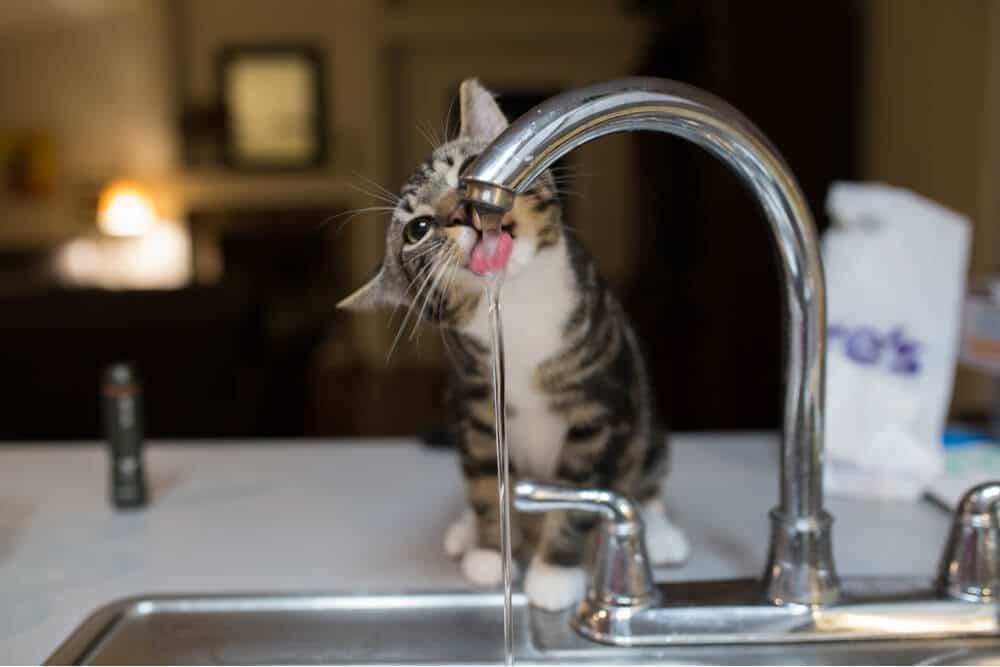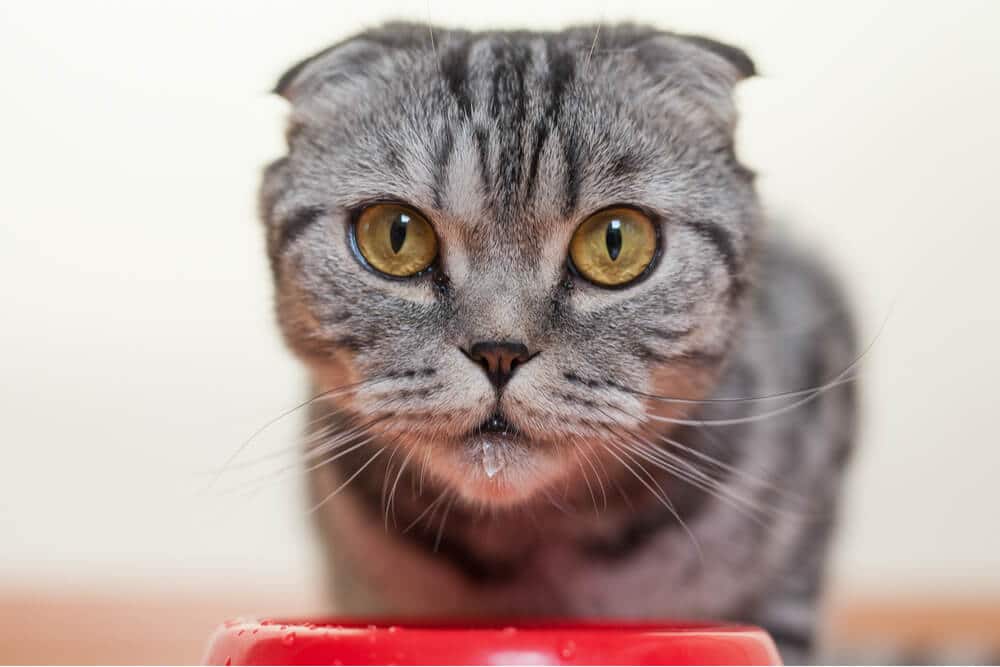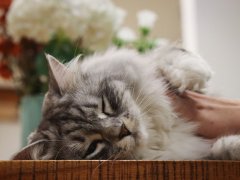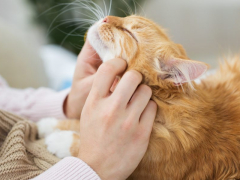
Most cat parents know how to monitor the general health of their pets, by observing their appearance, their daily habits, and their appetite. But it’s less well known that monitoring their daily water intake is a simple, extra way of ensuring that your cat is in optimal health.
Most often, people don’t realize that their cat is drinking excessively until the issue is relatively advanced, and their cat is drinking such copious amounts of water that it is almost impossible not to notice.
They may find that they need to repeatedly fill up the water bowl, or they may observe their pet drinking from the water bowl far more often than before.
This article explains the possible reasons for increased drinking and suggests that measuring your cat’s water intake can be a helpful habit to develop.
Background
Veterinarians refer to increased water consumption, or excessive drinking, as “polydipsia”, and it is often linked to the passing of larger volumes of urine, which is termed “polyuria”.
The combination of increased thirst and increased urination is often called “polyuria polydipsia”, abbreviated to PUPD. Often, the driver for the increased thirst is the increased urine production, which in turn is caused by an internal metabolic issue of some kind.
Causes of Increased Thirst in Cats

Cats start drinking increased quantities of water for a wide range of reasons, including a dry diet, kidney disease, diabetes, and more.
There is a long list of common causes of increased thirst, and an investigation by a DVM veterinarian is always needed to identify the underlying problem so that appropriate treatment can be given.
- Dry food always leads to cats drinking more water: wet food (tins or sachets) contains over 80% moisture, so if cats are changed to dry food (which contains 6 to 10% moisture), owners will always notice an increase in visits to the water bowl.
- Hormonal disorders including diabetes mellitus, hyperthyroidism , hyperadrenocorticism (Cushings Disease), and hypoadrenocorticism (Addisons Disease).
- Kidney disease, including chronic kidney disease, also known as chronic renal failure (CRF), which is very common in older cats.
- Urinary tract disease
- Liver disease
- General internal disorders including neoplasia (cancer), abscesses and womb infections in unspayed female cats
- Electrolyte disorders such as hypercalcaemia (high blood calcium) and hypokalemia (low blood potassium)
- Medication, including drugs like corticosteroids (e.g. prednisolone), diuretics (e.g. furosemide) and anti-seizure medication (e.g. phenobarbitone).
Investigation of the Cause of Increased Thirst in Cats
To pinpoint the precise cause of increased thirst, a logical series of investigations may need to be carried out by your veterinarian.
These include:
- Detailed history taking, noting any other aspects of the cat’s habits that may have changed, such as loss of appetite, change in type of cat food, change of supply of water (e.g. a water fountain, or running water, may encourage cats to drink more).
- Physical examination: some causes of increased thirst may be obvious to a veterinarian by simply examining your cat (e.g. weight loss, rapid heart rate, enlarged thyroid glands, an internal mass of some kind in the abdomen). Blood pressure measurement may also be suggested.
- Urine tests: you may be able to collect a urine sample from a litter box using a special litter substrate provided by your veterinarian. If you cannot do this, your veterinarian may be able to collect a urine sample directly from your cat using a technique called cystocentesis.
- Blood tests: analysis of blood cells and internal biochemistry provides useful information about the internal metabolism of your cat.
- Diagnostic imaging: x-rays and ultrasound will often provide further detailed information about possible causes of increased thirst.
The completion of these types of tests usually provides sufficient information to make a precise diagnosis of the cause of your cat’s increased thirst.
Conclusion

Cats sometimes drink more than usual if you introduce a pet fountain.
If any cat starts to drink noticeably more fresh water than previously, this is a sign that there may be a significant cat health problem brewing, and a visit to a vet for a thorough health check is recommended, It can make sense to measure how much water you need to add to top up your cat’s water bowl every day, so that it is then obvious to you if your cat suddenly starts drinking more water.
Also Read: 10 Reasons Why Cats Put Toys In Food Or Water Bowls
Frequently Asked Questions
How do I know if my cat is drinking too much water?
Most owners simply notice that their cat is spending more time lapping from their water bowl compared to in the past, or that they need to fill up their cat’s bowl more frequently.
If you suspect your cat may be drinking excessive water, but you are not sure, it makes sense to measure the amount of water that you are adding to the bowl every day.
How much water should a cat drink in 24 hours?
Cats generally drink enough water to keep their body hydrated, but the exact amount varies from cat to cat. The technical definition of “excessive thirst” for cats and dogs is when they are drinking more than 100ml per kilogram (1.5 fl oz per pound) of body weight every day. Cats generally weigh between 2.5 and 7.5kg (5.5 to 16.5lbs): if a 2.5kg (5.5lb) cat drinks more than 250ml (8.5 fl oz) per day, or a 7.5kg (16.5lbs) cat drinks over 750ml (25 fl oz) per day, this is definitively “too much”. However, a much smaller intake of water could still be classified as too much for an individual animal: if any cat starts to drink significantly more water than before, it makes sense to look into this.
Why is my elderly cat drinking so much water?
Some of the diseases listed above are more common in older cats. In particular, chronic renal failure, diabetes mellitus, hepatic disease and hyperthyroidism are all more common in elderly cats.
Do cats drink a lot of water?
Cats’ thirst varies on an individual basis. Cats obtain water from a variety of sources, including moist food (which contains 80% water). They also drink water from outdoor sources (puddles and ponds), and water bowls. Typically, a healthy cat might consume a total of around 50ml per kilogram body weight every day.








What happened to ounces and pounds? Put metric in parentheses where it belongs!! Help with quicker reading!
I will go back and add in ounces and pounds: this is an international website and while there are many readers in USA and UK, in most other countries (where many of our readers come from), imperial measurements have been replaced by metric. And in international veterinary discussions, metric is definitely the standard measurement these days.
Is there any preferred water that I should be giving my cat? Distilled, mineral, bottled?
Hi Geo, I would recommend filtered water from the tap or a bottle. I’ve yet to see conclusive information on distilled or mineral water for cats, but neither is preferable to the alternatives. Hope this helps!